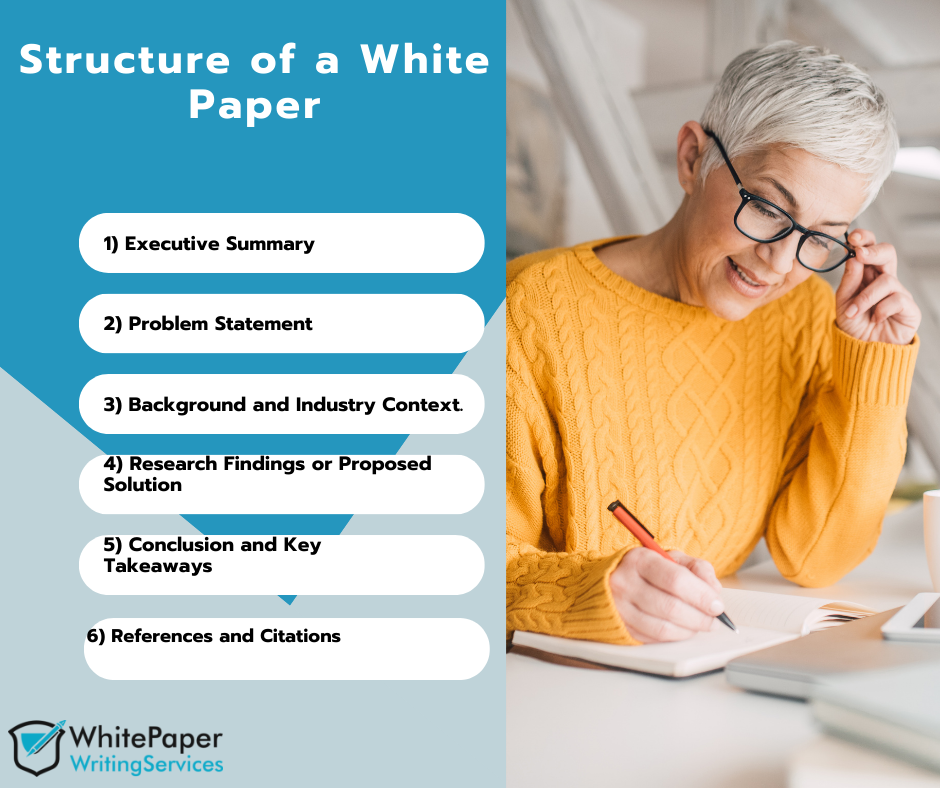How to Write a White Paper Research
April 21, 2025 · 9 min read

Writing a white paper research report is one of the smartest ways to explain complex ideas using clear facts. White papers are used by businesses, researchers, and thought leaders to show real solutions to real problems. They help readers understand new trends, evaluate data, or choose between competing options.
To write a strong white paper, you need to do more than share your opinion. You must collect trusted data and present it logically. A good white paper informs, educates, and builds trust with the audience. Whether you’re writing for executives, investors, or academics, a smart approach makes all the difference. In this guide, you’ll learn how to write a white paper research step by step, using best practices.
What Is a White Paper?
A white paper is a long report that explores a topic or solves a problem using evidence and analysis. In business, companies use white papers to explain how their products or services solve specific challenges.
In academic settings, white papers share research findings or policy ideas. They’re formal documents meant to help readers understand big issues in a clear way. A white paper usually includes facts, charts, and real examples. It is not used to sell something directly. It’s used to build trust and offer insight. Think of it as a guidebook backed by data.
Why Does White Paper Research Matter?
Strong research is what gives a white paper its power. Without data, your ideas are just guesses. Research shows readers that your claims are backed by real numbers, facts, and trusted sources. In business, it helps decision-makers see value clearly. In science and policy, it proves that your work is reliable.
Good research makes your content more trustworthy and helps it get ranked better by search engines. Readers are more likely to share your work, cite it, or act on it when they see quality research behind it. That’s why research is the heart of every strong white paper.
Steps of a White Paper Research
The following are critical steps for writing white paper research.
9 Steps of Writing a White Paper Research

1. Define the Purpose and Know Your Audience
Before writing, be clear on why you’re creating the white paper. What question are you answering or what issue are you solving? Set a clear objective so everything in your paper connects to that goal.
Next, define your audience. Are you writing for managers, developers, or policy makers? Knowing your readers helps you decide what tone to use, what words they understand, and what kind of data they care about.
2. Choose a Relevant and Timely Topic
Your topic should be current and meaningful to your audience. Look at what’s happening in your industry or field. Use trends, surveys, or online tools to see what questions people are asking. A strong topic answers a need or solves a challenge. If the subject is too big, narrow it to one main idea you can explain well.
3. Conduct In-Depth and Credible Research
Use reliable sources like peer-reviewed journals, government reports, and expert interviews. Take notes from white papers, case studies, and real-world examples. Use surveys, focus groups, and online databases when needed. Check every fact twice. The stronger your data, the better your argument. Organize your notes before writing so your paper flows smoothly.
4. Outline and Structure Your White Paper
Create a simple outline before you start writing. Start with a summary, then define the problem. Add a section for background and then explain your findings or solution. End with a strong conclusion and your list of sources. Use subheadings and short paragraphs. This helps readers follow your message clearly. The following image shows the structure of a white paper.
Structure of a White Paper

Executive Summary
This part gives readers a quick overview of what’s in the white paper. It includes the problem, your main points, and the suggested solution. Write this last, even though it comes first. Make it short and strong.
Problem Statement
Explain what issue your paper is focused on. Show why it matters. Use facts and examples to prove the problem is real and worth solving.
Background and Industry Context
Give readers enough background to understand your topic. Share past research, key events, or trends related to the issue. This gives your paper context and depth.
Research Findings or Proposed Solution
This is where your main research goes. Explain what you learned or what solution you suggest. Use facts, data, quotes, and visuals. This is the heart of your paper.
Conclusion and Key Takeaways
Wrap up your ideas. Remind readers what the problem was and how your insights help. End with a few clear takeaways or action steps.
References and Citations
List all the sources you used. Use a format your audience expects. This builds trust and shows your work is based on real information.
5. Write with Clarity and Authority
Your writing should be simple, clear, and respectful. Avoid long, confusing sentences. Use everyday words where possible, especially if your audience is not highly technical. Explain things as if you’re teaching someone new. Support your points with data and real examples. Don’t try to sound overly complex, focus on helping your reader understand. Each section should guide your reader closer to a clear takeaway. Keep your tone firm, professional, and focused on facts, not hype.
6. Visuals That Support Your Research
Visual elements like charts, tables, and infographics can make your points clearer. Use visuals when explaining data or comparisons. Keep designs simple and easy to read. Make sure every graphic has a clear label and connects directly to your text. Good visuals help break up long sections and make the paper easier to follow. Never add a chart just to fill space. Each one should serve a purpose. Readers often remember visuals more than text, so use them wisely.
7. Review, Revise, and Proofread
Once your draft is done, take time to revise. Read it out loud to hear how it flows. Fix unclear ideas and cut out extra words. Check that each section connects to the next. Use spelling and grammar tools to catch errors. Ask a colleague or editor to review your paper. They may catch things you missed. Clean writing shows readers you care about quality. A polished paper builds more trust than one full of small mistakes.
8. Optimize for SEO and Readability (If Online)
If you’re publishing your white paper online, help search engines find it. Use keywords naturally in your titles and subheadings. Don’t overuse them. Add bullet points and short paragraphs to make the paper easier to scan. Include internal links to other helpful pages. Add a meta description if possible. You can also use schema markup to highlight author name, publication date, and topics. All these steps help your paper rank better and reach more readers.
9. Publish and Distribute Strategically
Decide how you will share your white paper. Will it be a PDF, a blog post, or a landing page offer? Gated content (where readers enter their email) can help collect leads. Share it through email, social media, and online communities that match your topic.
Monitor how many people download, read, or share your paper. Use this feedback to improve future papers. Distribution is key, don’t just post it and hope people find it.
Tips for Success in White Paper Research Writing
Stay Objective and Solution-Focused
Don’t turn your white paper into a sales ad. Focus on solving a real problem. Let the facts speak for themselves. Stay neutral when comparing options or approaches. Offer helpful insights that your readers can trust. When you stay honest and solution-focused, readers are more likely to believe your message.
Back Every Claim with Data
Readers trust facts, not guesses. Support your points with numbers, sources, or expert quotes. Use current data when possible. Cite where your information came from. Don’t just say something is true, prove it. This makes your paper stronger and more reliable.
Keep It Actionable
Give readers advice they can use. End your paper with steps or ideas they can apply in real life. Don’t just explain a topic, show readers how to move forward. Even one useful takeaway can make your paper more memorable and more likely to be shared.
Consider Hiring a Professional White Paper Writer
If writing isn’t your strength or you’re short on time, a professional white paper writing services can help. They know how to explain complex topics clearly. They organize your thoughts, do research, and write in a way that readers understand.
Hiring a white paper writer is smart if your audience includes leaders, partners, or potential clients. Writers help make sure your paper meets a high standard from start to finish.

Shirlene W.
Shirlene W. is a seasoned business writer with a passion for helping entrepreneurs and businesses achieve their goals. With years of experience writing white papers and strategic roadmaps, Shirlene specializes in delivering unique solutions across diverse industries.


